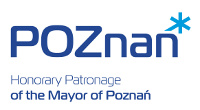PLM2016 Thematic session: Workshop Session on Nominal Classification in South-East Asia
Conveners: Marc Tang (INALCO/CRLAO Paris) and Marcin Kilarski (Adam Mickiewicz University, Poznań)
The contact person for this thematic session is Marc Tang (e-mail:MarcTang.Ling@gmail.com).
Linguists are interested in systems of nominal classification due to their diverse lexical and pragmatic functions as well as cognitive and cultural correlates. Recent studies have shown that languages may rely on different types of nominal classification to express related functions such as the expansion of the referential power of the lexicon and identifying participants in discourse (Contini-Morava & Kilarski, 2013). In particular, ongoing research has focused on semantic, functional and morphosyntactic properties of complex nominal classification systems, such as co-occurring gender and numeral classifiers as well as gender and verbal classifiers (see, e.g. Fedden&Corbett, 2016). The main regions discussed within such approaches include north-western South America and Papua New Guinea.
This workshop proposes to focus on another region possessing languages which display complex nominal classification systems, i.e., Asia. In particular, numeral classifiers are the hallmark of the languages of East and South-East Asia. Moreover, the northern region of India is also the meeting point between Indo-European and Sino-Tibetan languages, which possess prototypical examples of gender and numeral classifier systems, respectively. This condition makes the language of this zone unique in the sense that they show a co-occurrence of numeral classifiers and grammatical genders, while most of the languages attested in the literature involve either two classifier systems, e.g. Minangkabau (Austronesian) rely on both noun classifiers and numeral classifiers (Marnita, 1996) or two-gender systems, e.g. Paumari(Arawan) with a masculine/feminine gender system plus human/non-human gender system (Fedden & Corbett, 2016). Studies have been done on co-existing classifier and gender systems in South American languages, e.g. Palikur (Aikhenvald, 2000), nevertheless this phenomenon has not been treated in the languages of Asia, where language contact between Indo-European and Sino-Tibetan languages is expected to create different results than in South American languages.
As to the motivation of studying such languages, first of all, such complex systems are relatively uncommon statistically (Sinnemäki, 2015; Tang, 2015).Generally genders occur in inflectional languages while classifiers tend to occur in languages with less complex inflectional morphology. The co-existence of the two systems in the same language creates a conflict between these opposing tendencies, as shown by the complex morphosyntactic properties of such systems (Fedden et al, 2015). Second, the way genders and classifiers categorize nouns is drastically different: gender languages such as French categorize all nouns into either masculine and feminine, while classifier languages such as Mandarin Chinese class nouns according to the inherent properties of their referents, such as animacy and shape. The ways in these systems operate on nouns in the same language create a unique patchwork of semantic and morphosyntactic properties. Following the motif of PLM 46 “Linguistics and data: A fresh look”, we will therefore focus on the following issues related to nominal classification systems in Asia, focusing but not limited to South-East Asia:
a) case studies of specific languages displaying complex nominal classification systems and the formal and semantic interaction among them;
b) the realization of particular semantic and discourse functions, e.g. individuation and reference tracking;
c) the interaction of nominal classification and other nominal categories such as number and definiteness;
d) areal studies of nominal classification;
e) the role of language contact in the origin and loss of nominal classification systems.
References:
Aikhenvald, Alexandra Y. 2000. Classifiers: A typology of noun categorization devices. Oxford: Oxford University Press.
Aikhenvlad, Alexandra Y. 2010. Gender, noun class and language obsolescence: The case of Paumari. In Eithne B. Carlin & Simon van de Kerke (eds.), Linguistics and archaeology in the Americas: The historization of language and society, 235-252. Leiden: Brill.
Contini-Morava, Ellen & Kilarski, Marcin. 2013. Functions of nominal classification. Language Sciences 40. 263-299.
Corbett, Greville G. & Fedden, Sebastian. 2015. Canonical gender. Journal of Linguistics FirstView Article: 1-37.
Fedden, Sebastian & Corbett, Greville G. 2016. Concurrent systems: Refining the typology. Paper presented at the workshop “Gender and classifiers: Diachronic and synchronic variation”, Guildford, 28 January 2016.
Fedden, Sebastian, Timothy Feist, Matthew Baerman, Dunstan Brown, Greville G. Corbett and Gunter Senft. 2015. Mian and Kilivila Collection. University of Surrey. http://dx.doi.org/10.15126/SMG.30/1
Marnita, R. (1996). Classifiers in Minangkabau. MA thesis, Australian National University, Canberra.
Sinnemäki, Kaius. 2015. On the typological distribution of genders and numeral classifiers. Paper presented at the conference of grammatical gender and linguistic complexity, 20-21 November 2015.
Tang, Marc. 2015. A GIS typological analysis of the convergence and divergence among numeral classifier, genders and plural markers in the world’s languages. National Chengchi University (Taiwan) MA thesis.
